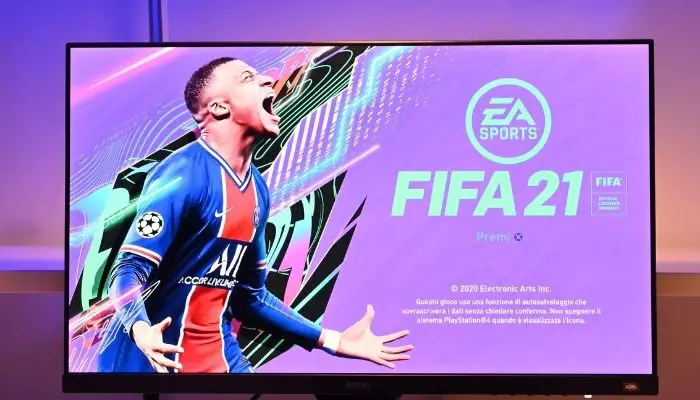The LCD matrix’s rows are controlled by a ribbon on the LCD, while the LCD’s columns are connected to a rubber standoff on the display’s longest side. The rubbery connection worked flawlessly. You will show only a few output lines on the LCD if the LCD is defective.
The symptoms are a result of the LCD ribbon being installed incorrectly during manufacturing and the module being installed incorrectly, which reveals excessive heat and vibration. It eventually causes the ribbon to break and is a common problem. So, in this guide, I will discuss How to Repair Ribbon Cable for LCD?
This repair needs a great deal of delicacy and agility, so don’t underestimate the value of perseverance in the process. With this type of repair, you may only have one opportunity to get it right.
It’s also essential to take care when removing the LCD ribbon not to damage the carbon-painted lines or tear the perfect ribbon. Other problems can be avoided by observing PCB rules, and it may be necessary to use an extra set of gloves to reattach the PCB.
About Ribbon Cable
A ribbon cable also referred to as a flexible flat cable (FFF), is an electrical cable with a flat profile and a plastic exterior. It acts as a conductor of electricity, as do all electrical cables.
A ribbon cable has little or no restriction on the flow of electricity. Because they have flexing property and can be bent without breaking, ribbon cables are unique.
Bending or flexing other types of electrical cables might cause them to snap. At first, they might not break. Numerous bends or flexes may be necessary for a standard electrical cable before it snaps.
With constant bending or flexing, conventional electrical cables wear out. As the cable ages, it may lose its ability to conduct energy and, by extension, data.
What is T-Soldering Iron?
A binding machine or T-soldering iron is required to repair and join LCD ribbon wires. Activating the glue without melting the plastic ribbon is possible thanks to a small silicone strip fitted on the top of these irons. The silicone tip allows moderate heat transfer from the iron to the ribbon.
An Efficient Way to Repair Ribbon Cables on LCD

Depending on the gadget you have, the ribbon removal process can be tricky. Creating a universal fix for all devices would be impossible, so please caution when selecting yours.
Things to Require
Following are the items required to Repair Ribbon Cable for LCD.
- Viewing/cleaning PCB pads and ribbon registration require an eyepiece with a magnification of at least X10, preferably X20.
- Cutting and trimming ribbons with rounded blades.
- Plastic or metal ruler – for trimming and fastening LCD ribbons
- Adjustable temperature solder irons are recommended for imparting heat; however, you can also use a hot glue gun.
- Tinfoil – to cover the nozzle of the soldering iron or glue gun.
- Cleaning PCB pads with cotton wool earbuds is a good idea.
- Cleaning pads on PCBs with isopropanol or methylated spirits
- To hold the LCD ribbon in position, another pair of massive hands is needed.
- The ribbon can be removed with tweezers if there is any leftover.
Step 1: Removal of Ribbon
Avoid pulling on the ribbon, as you may damage your other supplies in the process. The ribbon should be cut free as close to the PCB pads as possible.
It would be best to slice it side by side with the PCB board with a blade to remove the ribbon. Take care with this since you may need to save some extra ribbon for reattaching the LCD module afterward.
Step 2: Remove The LCD Panel
The LCD panel was removed and stowed away in a secure location to avoid further damage. The ribbon was carefully raised and peeled back with tweezers to reduce bulk. If your PCB is of poor quality or is a single-sided cardboard kind, you should not use force to remove the remaining ribbon.
The ribbon can remove the PCB pads! Although LCD PCB pads should be more stable on a double-sided FR4-quality board, they can still fall off when using fine-pitch devices, so keep that in mind.
Step 3: Cleaning of PCB
- After the ribbon has been removed, the PCB pads need to be cleaned to eliminate any ribbon residue. The connection pads on your PCB may be gold-flashed if it is of decent quality (actually called Electroless Plated gold).
- Even though the gold flashing on these PCB pads creates an excellent flatness, the gold edge connectors (like those found on vintage PC adaptor cards) are much stronger mechanically.
- It’s a soft gold plate that’s also only a few hundredths thick. The outer layer may be rough if you use only tin solder pads. You can improve the flatness of the solder pads by re-touching them.
- It would be best to wipe any old glue from a ribbon and any remaining carbon particles from the pads for both connection methods.
- You can use a cotton wool bud to apply isopropanol. Do not saturate the PCB with cleaning fluid, as this could damage any nearby electro-mechanical components, such as switches and other elements on the PCB that are not sealed for cleaning!
- The pads present on the PCB need to be thoroughly cleaned and free of any contaminants. Use your X10 or X20 eyepiece to inspect the pads. The pads on the PCB should be spotless at all times.
Step 4: Trim the Ribbon
Then trimmed, the ribbon was with a scalpel after being put flat using a ruler. The additional green tape was also on the ribbon, which you can use to secure it to the PCB pad connector on the original board heel. It added mechanical stability to the ribbon, but it had to be peeled off to be reconnected.
Step 5: The Pre-Assembly and Registration of the LCD Ribbon
- After thoroughly cleaning the PCB pads and trimming the ribbon, the LCD ribbon re-registration proved the most difficult.
- Having a delicate pitch ribbon as you did will be the most difficult to deal with. Before you can get the ribbon perfectly matched, You will require an extra pair of hands and some patience.
- Getting the PCB and ribbon perfectly aligned took around twenty minutes of nudges. Even though the original was significantly skewed to one side, we could get a better alignment.
- The expert’s first thought is to use a giant Blu-Tak ball to keep things in place, but an additional set of gloves is far more convenient!’
- As long as some of the gold pad fingers and toes of the PCB are visible further than the carbon lines of the ribbon, you can get good alignment. You then align the toes of the pads with the carbon lines on the LCD ribbon to complete the process.
- Continue only once the ribbon’s black carbon lines are perfectly aligned with the pads on the PCB. Better registration is necessary for finer-pitch ribbons.
Step 6: Reattach the Ribbon Using Heat
The tips and procedures for heating ribbon cable are mentioned below :
Suggestions for Proper Heating
Here are a few pointers on how to effectively use heat.
- Do not overheat the ribbon to the point of destruction. Your ribbon will overcook on one side, but you will be able to get away with it. To acquire the right amount of heat, you may wish to test on the piece of wood that you cut off.
- The heated tip should be pressed down vertically and rubbed in a clockwise direction only to secure the ribbon in place. It follows the same course as carbon lines.
- Resist the urge to use heat in a sweeping motion! In particular, delicate pitch ribbons can be damaged by heat, which can cause the ribbon to snag or rip.
- Make sure you don’t overheat any unnecessary components. You should shield other parts if space is limited.
- For applying heat, you can use whatever you like; you can use a 25W Soldering Iron and Tin Foil to cover the wide flat tip.
- Tinfoil can cause the soldering iron to get excessively hot, so you can cool it down by dipping it into a sponge before using it.
- You can utilize the soldering iron tip method because it will enable you to adjust the temperature more precisely, but you did not regulate it.
- It is best to start from low and gradually increase the temperature of your soldering iron to achieve a precise temperature.
- Tin foil-covered hot glue gun tips can also be used, although the glue gun tip can be too large in small locations because of its huge diameter.
Procedure for Heating Ribbon Cable
To use your heat source, follow these steps:
Step 1: Before turning on the heat, make one last check of the registration.
Step 2: Second, tack down and double-check your registration.
Step 3: Finally, tack down the other end and check registration.
Step 4: Now that you’ve tracked down the LCD ribbon, it’s time to heat the remaining ribbons.
Step 5: Again, avoid heating the ribbon all at once. If you’re using a dabbing technique, work from your heel down. Once the ribbon is heated and the tip is elevated vertically, you should use the damp sponge to chill the tip before each subsequent dab.
Step 6: If the ribbon is attached, you’ll notice a difference in appearance on the PCB because of its adhesive.
Step 7: Step two shows the actual ribbon being reattached. As you can see, the left side of the ribbon did not perform as well as the right. You can end up chilling the soldering iron with a moist sponge before heating it.
Frequently Asked Question
What Is Flex Ribbon?
Flexible flat cable (FFC) is a flat cable with a high liability that you may manipulate in small places. A flex cable to a smaller, more complex version of a ribbon cable.
Where Is Flex Cable Used?
The TTL display cable is just one example of a flexible cable used in various electrical gadgets. Cables for transmitting data. Interconnections between flat panel displays.
What Is the Difference Between FFC and FPC?
While an FFC is any electrical wire that is flexible and flat, an FPC is a flexible printed circuit. FFC stands for flat flexible cable.
Conclusion
Ribbon cables function in the same way as other electrical cables in that they provide an electrically conductive channel. LCD panels employ them to save space and enhance dependability.
The distinction is that they are relatively thin and flexible– two properties not seen in ordinary electrical wires. These ribbon cables allow you to fix your distorted or malfunctioning LCD screen on your own while keeping the actual glass screen.
So, you have to follow the steps outlined above in this article to know How to Repair Ribbon Cable for LCD? Because a ribbon cable replacement is a cost-effective option for replacing the entire LCD assembly in your display cluster, climate control, or radio.
There may be a labor or time factor to consider while making your decision. Sometimes it’s more cost-effective to buy the LCD screen with the ribbon attached from us.
